The alkali metals (Li, Na, K etc.) and the alkaline earth metals (Mg and Ca, together with Zn) are good reducing agents, the former being stronger than the latter. These same metals reduce the carbon-halogen bonds of alkyl halides. The halogen is converted to a halide anion, and the carbon bonds to the metal which has characteristics similar to a carbanion (R:-). Some common organometallic reagents are shown below


Because organometallic reagents react as their corresponding carbanion, they are excellent nucleophiles. The basic reaction involves the nucleophilic attack of the carbanionic carbon in the organometallic reagent with the electrophilic carbon in the carbonyl to form alcohols.

Both Grignard and Organolithium Reagents will perform these reactions going from Reactants to Products by this simplified pattern:

Addition to formaldehyde gives 1o alcohols
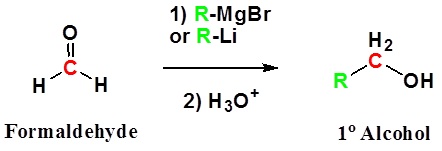
Addition to aldehydes gives 2o alcohols
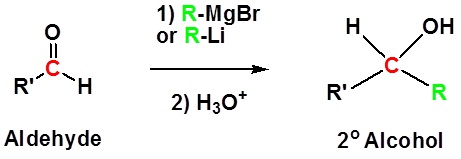
Addition to ketones gives 3o alcohols
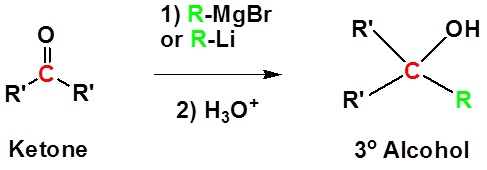
Addition to carbon dioxide (CO2) forms a carboxylic acid

Example
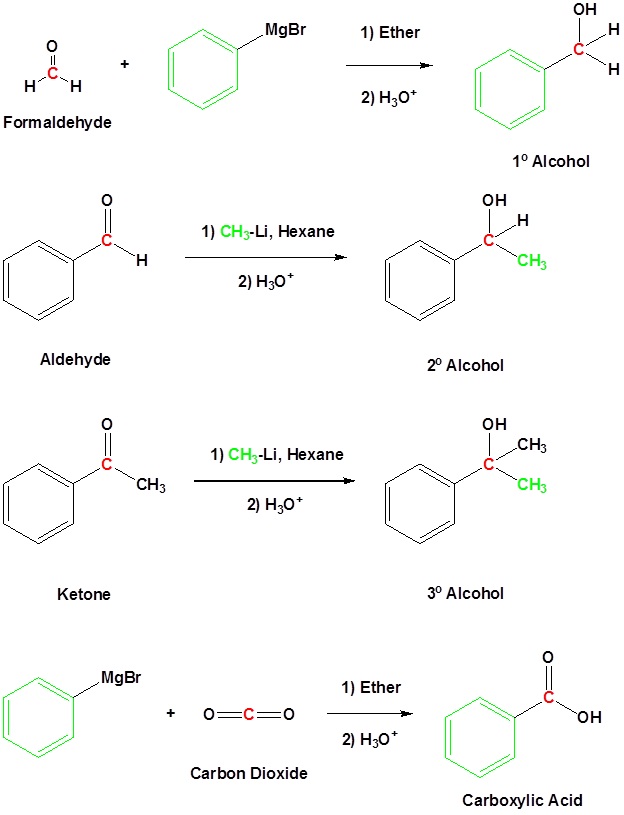
Mechanism for the Addition to Carbonyls
The mechanism for a Grignard agent is shown. The mechanism for an organometallic reagent is the same.
1) Nucleophilic reaction with carbonyl carbon
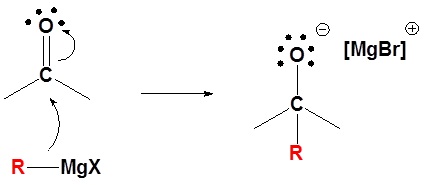
2) Protonation of tetrahedral intermediate

These reagents are very strong bases (pKa's of saturated hydrocarbons range from 42 to 50). Although not usually done with Grignard reagents, organolithium reagents can be used as strong bases. Both Grignard reagents and organolithium reagents react with water to form the corresponding hydrocarbon. This is why so much care is needed to insure dry glassware and solvents when working with organometallic reagents.

In fact, the reactivity of Grignard reagents and organolithium reagents can be exploited to create a new method for the conversion of halogens to the corresponding hydrocarbon (illustrated below). The halogen is converted to an organometallic reagent and then subsequently reacted with water to from an alkane.

Conjugate base anions of terminal alkynes (acetylide anions) are nucleophiles, and can do both nucleophilic substitution and nucleophilic addition reactions.
As discussed above, Grignard and organolithium reagents are powerful bases. Because of this they cannot be used as nucleophiles on compounds which contain acidic hydrogens. If they are used they will act as a base and deprotonate the acidic hydrogen rather than act as a nucleophile and react with the carbonyl. A partial list of functional groups which cannot be used are: alcohols, amides, 1o amines, 2o amines, carboxylic acids, and terminal alkynes.
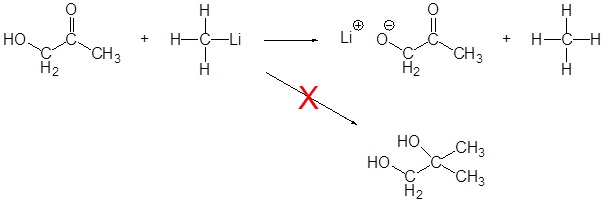
Exercises
9. Please write the product of the following reactions.
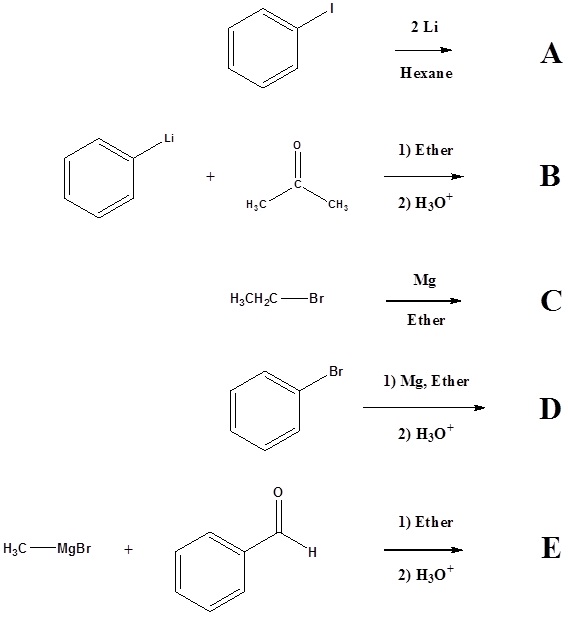
10. Please indicate the starting material required to produce the product.
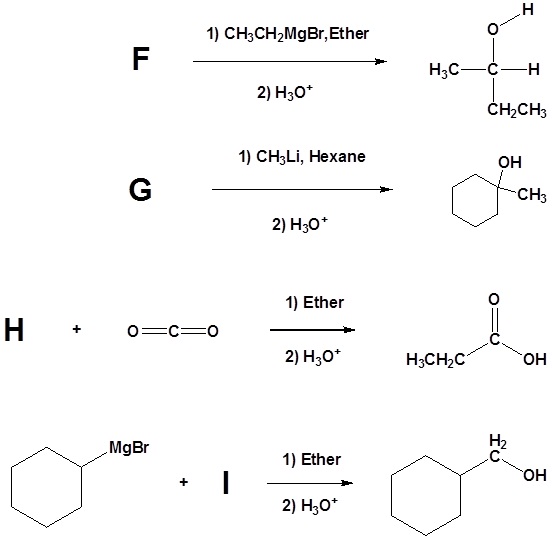
11. Please give a detailed mechanism and the final product of this reaction

12. Please show two sets of reactants which could be used to synthesize the following molecule using a Grignard reaction.
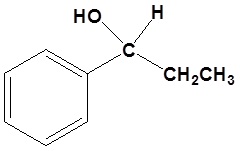
- Answers
-
9.
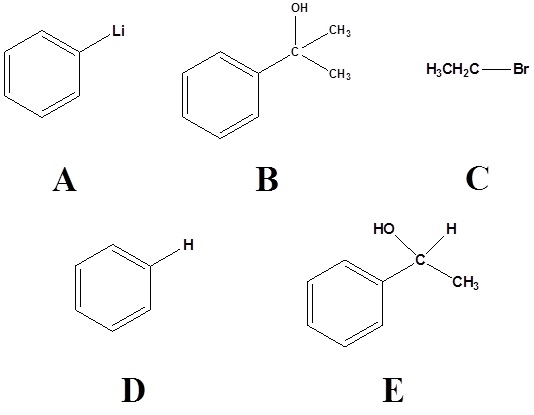
10.

11.
Nucleophilic addition reaction

Protonation

12.
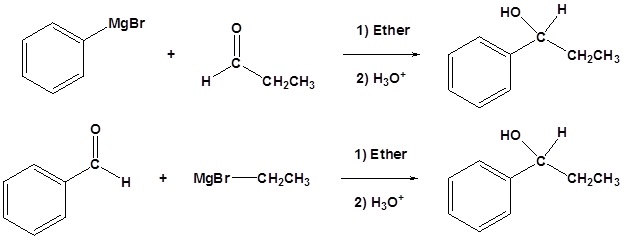
Contributors and Attributions
























